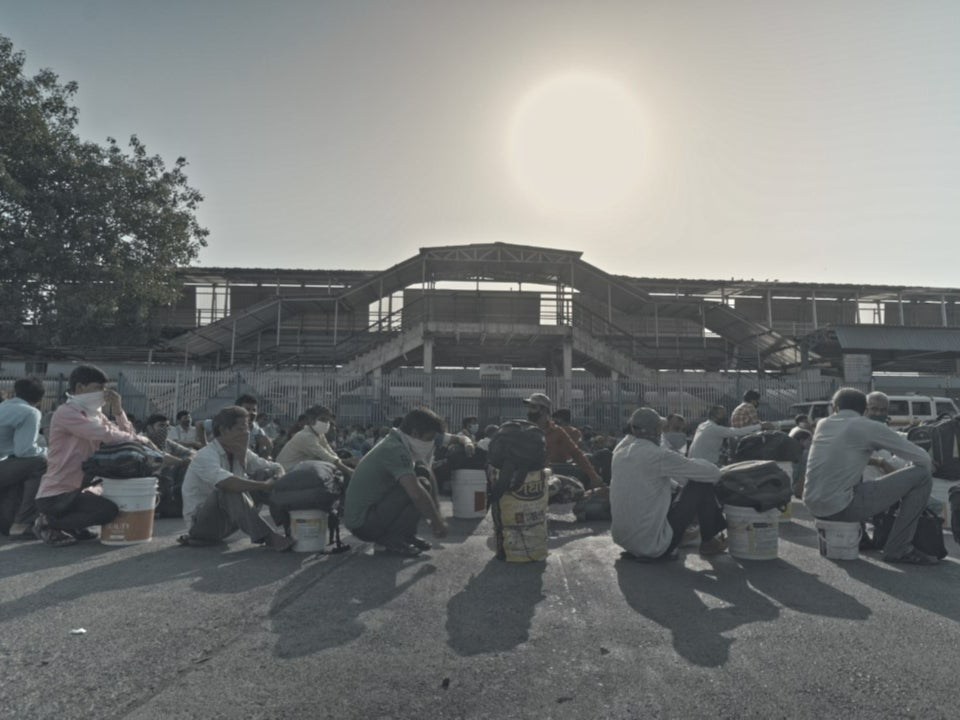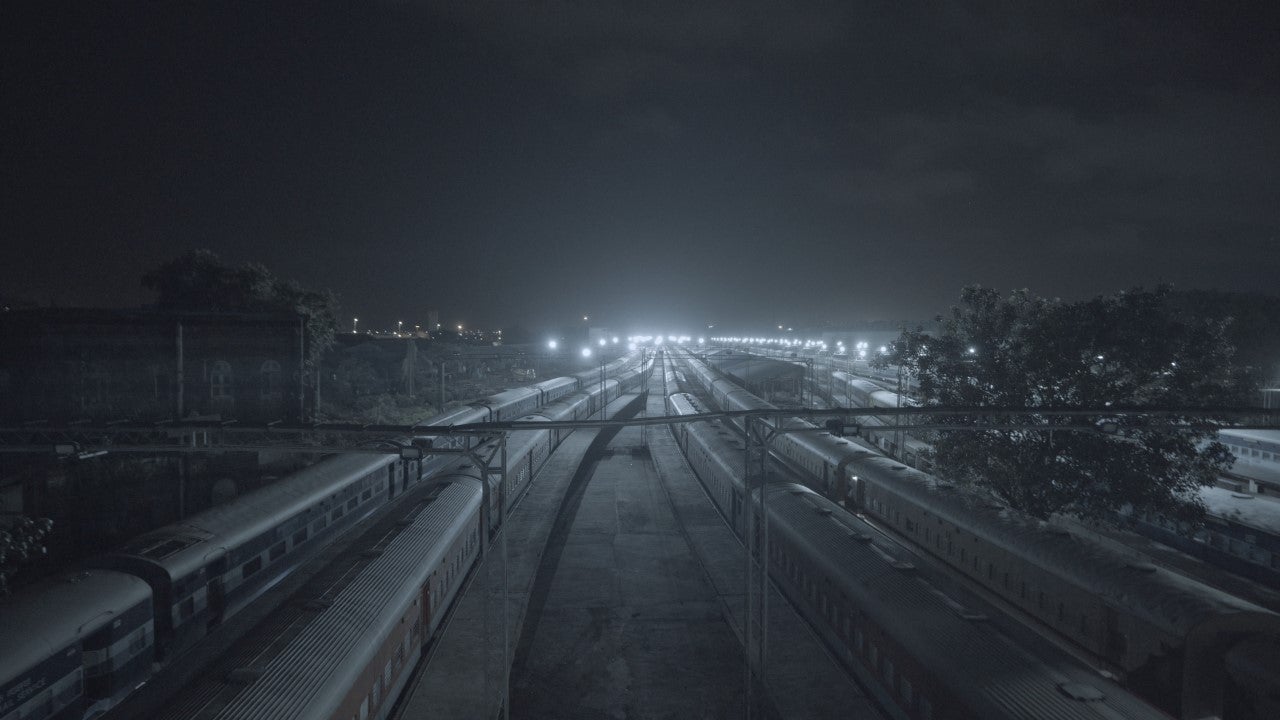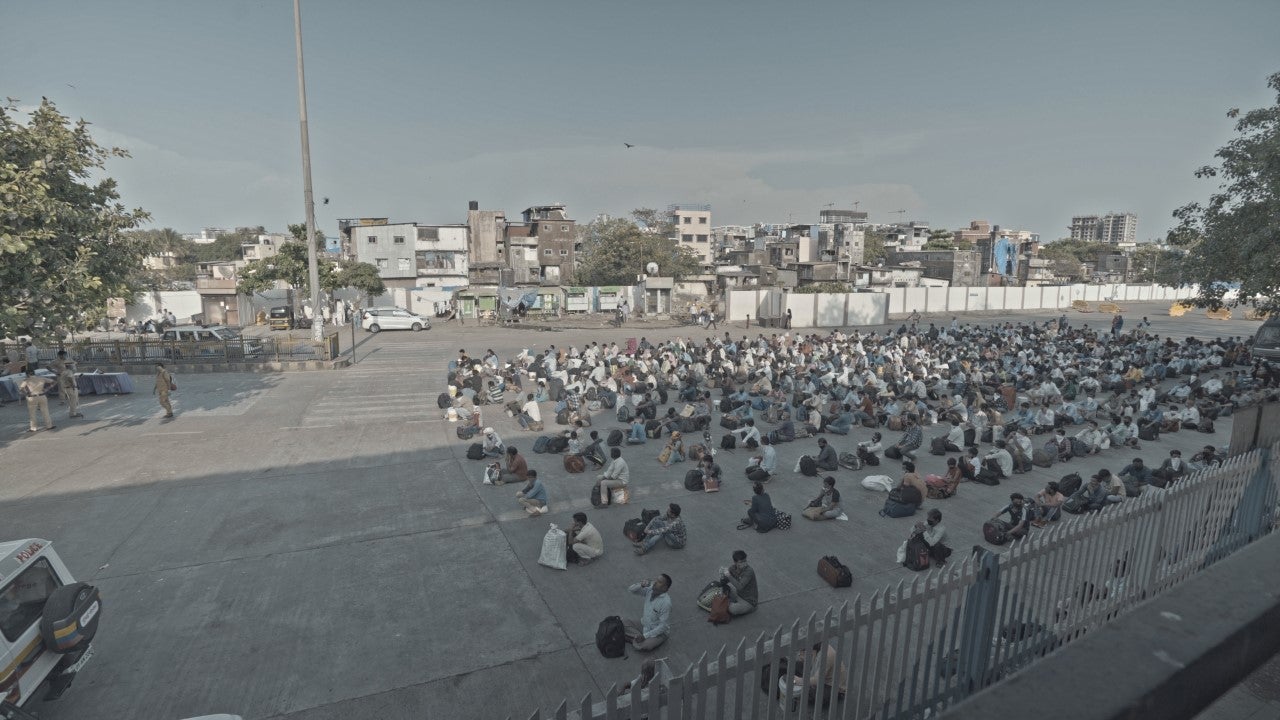Indian filmmaker trains lens on Covid hardships in ‘brutal’ documentary about domestic migrant crisis
‘Lords of Lockdown’ filmmaker Mihir Fadnavis talks to Maanya Sachdeva about the experience of shooting a ‘time capsule’ documentary


Time has turned debut filmmaker Mihir Fadnavis’s unflinching feature-length documentary into something far more profound than he’d originally intended.
“A time capsule,” the former journalist says about his film documenting India’s horrifying crisis, when millions of daily wage labourers left the big cities to return to their villages on foot after the nationwide lockdown in March 2020 rendered them unemployed and deathly hungry.
Initially, his plan was to tail doctors and paramedics in Mumbai – where Fadnavis is based – and document the onset of the pandemic. With celebrated Indian filmmaker and producer Anurag Kashyap backing the project, Fadnavis began prepping for Lords of Lockdown a week before prime minister Narendra Modi ordered a “full ban” on people stepping out of their homes in view of the escalating global health crisis.
India shut itself indoors and economic activity was brought to an overnight halt on 25 March 2020. “I thought: ‘Okay, I was right. Something’s going to go down, so let’s start shooting immediately,’” Fadnavis says.
Filmed over a six-month period, the documentary opens with drone footage of a dystopian Mumbai on the first day of lockdown, which was ultimately extended in phases until 31 May 2020. The city’s bustling, sea-facing promenade, Marine Drive, is completely deserted. Rows of billboards urge caution against a deadly new virus – “Corona” – and the usually packed local trains are parked quietly at the Chhatrapati Shivaji Terminus. A civic official sprays sanitiser along the length of an underground complex, and construction sites lie abandoned.
“Mumbai is a city that people often look at with a certain lens, and I wanted to show it from a different perspective,” Fadnavis says of the surreal, perversely beautiful stills of Mumbai, drained of its characteristic chaos. “What does Mumbai look like completely empty and isolated? I don’t think anybody has ever captured that or will ever capture that.”
Permissions, however, were a “pain in the arse”, he adds, so Fadnavis kept his crew lean. “It was just me and my director of photography, Ajatshatru Singh, travelling in cop cars, with a Røde mic on top and two cameras in our hands.”

The film plays out “like a thriller”. It follows Ruben Mascarenhas, who worked at an NGO that fed the down and out during the lockdown, Washington Post journalist Rana Ayyub, who led hunger relief activities in Asia’s largest slum, Dharavi, a former inspector general of the Indian railways, AK Singh, and urogynaecologist Dr Aparna Hegde.
The first half of the film focuses on the hunger relief efforts led by Mascarenhas’s Khaana Chahiye (Need for Food) and Ayubb with a team of volunteers. The anger of those left out of the purview of government policy during lockdown simmers, before it boils over at the 35th minute, when a food distribution drive managed by Ayyub’s team threatens to escalate into conflict. A man’s voice plays over the visuals at Antop Hill – “Khaana de do na, ma******” (“Feed us, m*********ers”) – which ends in the volunteer drive being shut down for the day.
“There was a guy chasing us, shouting at us and the food distribution crew the whole time,” Fadnavis says. “We asked whether we could put him in the film, but he refused. He let us use his voice because he thought it was important to convey his anger, but he was afraid of facing consequences if seen on camera.”
The politics of Mascarenhas and Ayyub also emerge. The former has been a vocal critic of Modi’s Bharatiya Janata Party-led Indian government and right-wing Hindu politics, including in Fadnavis’s film. “Where is our prime minister? Where is our health minister?” Ayyub asks.
Mascarenhas, who is currently contesting civic elections on behalf of the rival Aam Aadmi Party, is equally condemnatory of the emergency response plan that left millions of Indians starving.
“If you’ve seen the film, you realise there’s a transitionary element to it. We covered the lockdown as we saw it,” says Fadnavis, prefacing his answer to my question about watching the internal migrant crisis first unfold on the 35th day of lockdown – the halfway point or “D-Day” in his film – on 20 April 2020.
“We were with Ruben when he got a call about crowds gathering on the roads with their belongings,” Fadnavis continues, adding that Mascarenhas initially thought of driving down to distribute food to them. When Fadnavis, Singh and Mascarenhas reached the Western Express Highway, they were shocked to see at least 100 migrant workers attempting to walk home to their native places, barefoot during peak Mumbai summer.
“It was apocalyptic,” Fadnavis says of the onset of the exodus, which ultimately lasted for more than a month and resulted in the deaths of many thousands of migrants, captured in excruciating detail by Singh.
“When we told the cops we have no money to eat, they told me to eat s***,” a migrant says in one scene. “How long did you think we’d live like this?”
Fadnavis depicts the deepening of the crisis, amid lockdown, isolation and joblessness in Mumbai, through conversations with labourers living in the city’s migrant bedrock, Mahim. There is a deep resentment here for the city that once promised them a secure future and a better life, for its officials and for the leaders that shut them out. Most strikingly, the community is defiant.
In parallel, as Fadnavis and Singh continued to follow the developing crisis first-hand, disturbing news reports about migrant deaths began to appear online.
Amid anger over the government’s treatment of migrants – fuelled by news of fatalities and heartbreaking social media videos – the deployment of special Shramik Express trains to finally send migrants back to their homes in Uttar Pradesh and Bihar is the final chapter of Fadnavis’s film. Its hero is former inspector general of the Indian railways, Mr Singh, whose “role” in Lords of Lockdown “exploded” in light of the migrant crisis.
“It just turned out he had all those Hollywood cliches in his storyline: he’s retiring, it’s his last job,” Fadnavis continues.

“Mr Singh’s inclusion in the film was also especially important because he represents the government,” he says. “And this is not an anti-government movie at all.”
Rather, Fadnavis adds, it shows exactly what happened. “Once the government gave the go-ahead to AK Singh, he made sure that everything ran smoothly.”
Fadnavis also sought a response to the migrant crisis from the Bharatiya Janata Party, the Congress party, Mumbai’s ruling Shiv Sena Party and the AAP. “I told them: ‘We will show you the film as well, so you’re convinced that I’m not trying to make a political film – this is not about my politics. This is about a humanitarian crisis that happened in front of our eyes.’
“Out of [the four parties], only Congress and the AAP got back to me,” he says, referring to cameos by long-term Congress leader Dr Shashi Tharoor and Delhi chief minister Arvind Kejriwal respectively. “I tried hard to get the others. I really wanted the Shiv Sena’s opinion since the film is Mumbai-based.”
Maybe, he muses, they were worried the film would depict Mumbai in poor light, but “I don’t believe that it does”.
Fadnavis admits “this was a very hard shoot”. However, its first outing at a film festival brought him relief. “To be able to put [the movie] together is one thing; to put it out there is another thing altogether. And to be able to get people to connect with what you’re trying to say is yet another challenge entirely,” he says when I ask him what it was like to unveil Lords of Lockdown at the New York Indian Film Festival this May.
And the reception? Fadnavis says two people came up to him at the screening to talk about the notion of unity and diversity in these times in India, when communal tensions have resurfaced, threatening to rip apart the secular fabric of our country. “Hindus and Muslims should not fight, as one of the main characters says at the end of the film. It is so relevant and so prescient for somebody to come up and say that to me.”
The film, as Fadnavis reveals, ends with Shadab – one of the Muslim volunteers who worked with Ayyub – saying: “Bhook kissi ka mazhab nahi dekhti hain.” (”Hunger doesn’t care about your religion.”)
Nor does Covid, Fadnavis points out, thus tying the two themes of Lords of Lockdown together with a message of secularity.
Join our commenting forum
Join thought-provoking conversations, follow other Independent readers and see their replies
Comments
Bookmark popover
Removed from bookmarks